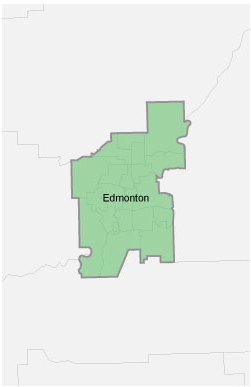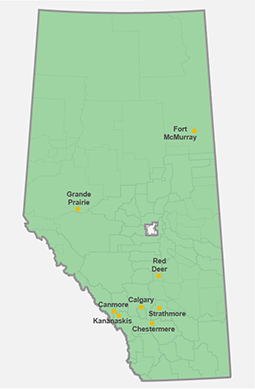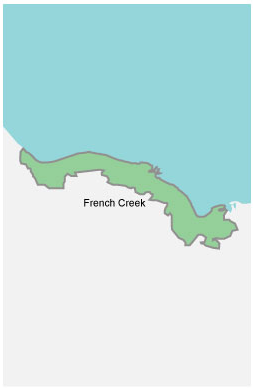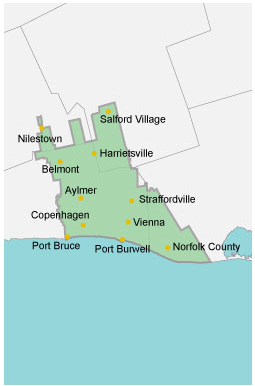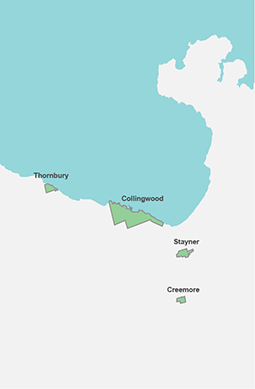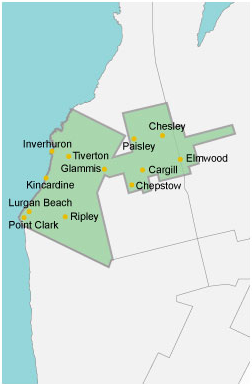The onset of milder temperatures means EPCOR is increasing its water monitoring, analysis and treatment activity to help keep our tap water tasting great.
As the snow melts in the North Saskatchewan River (NSR) watershed, the increased water flow moves sediment, vegetation and organics into water bodies. With agricultural land, forests and wetlands all part of the NSR watershed, the increase in materials picked up by the faster-moving river can affect the colour and clarity of the raw water entering EPCOR’s water treatment plants. And although the aesthetics may change, the tap water will remain safe to drink.
EPCOR has about 12 hours before upstream organic matter reaches the water treatment plants in Edmonton. As those amounts increase, advance planning and preparation is key. EPCOR experts are implementing the following procedures that will continue until river conditions stabilize:
- Watershed monitoring: Watershed specialists are watching the forecast and upstream tributaries of the NSR through the WaterSHED Monitoring Program, which takes daily photos of more than 16 locations and collects frequent water samples to record parameters like turbidity and pH every 15 minutes.
- EPCOR Water Excellence Lab: The water laboratory at Rossdale Water Treatment Plant is increasing the frequency of testing for key parameters like colour, ammonia and organic nitrogen that can effect taste and odour. Our analysts are also testing and assessing odours from samples collected at different stages throughout the treatment process.
- Spring Home Analysis Runoff Program (SHARP): SHARP is a program that’s unique in North America. More than 300 Edmontonians from all areas of the city have already been smelling and tasting their tap water daily and submitting this data to EPCOR. This collaborative effort provides key information about water quality at the tap in Edmonton households during runoff season. Participants will continue to perform this daily analysis until the end of April.
- Water Treatment Plant Operations: Proactive planning means our teams are ready to adjust treatment processes each day as conditions change. This includes having additional treatment supplies on-hand at EPCOR’s two water treatment plants—Rossdale and E.L. Smith.
“While spring runoff’s affect on our city’s water quality varies from year to year, one element never changes—the diligence and care our team takes in providing high-quality, great-tasting drinking water for all Edmontonians,” says Audrey Cudrak, Director, Edmonton Water Treatment Plants. “Our goal is always to minimize any impact to the taste or smell of our tap water as a result of the annual melt. And our water will always stay safe to drink.”
Some version of spring runoff exists in almost all municipalities that rely on surface water but the characteristics can be very different. In Alberta, the most comparable conditions to Edmonton are in places like Red Deer and Lethbridge. In Calgary, a large portion of the upstream watershed is rocky terrain that is low in sediment and organic matter, the forests are dominated by conifers, and a smaller percentage of the land is used for agriculture.
Quick facts:
- Edmonton’s water supply comes from the North Saskatchewan River, which flows from the Canadian Rocky Mountains and travels more than 400 km before reaching our city.
- This water is treated for up to 12 hours at one of Edmonton’s two water treatment plants before being delivered to more than 1.3 million people in more than 90 communities in Edmonton and the surrounding area.
- EPCOR’s water treatment teams test and adjust for hundreds of parameters before the water is delivered through a network of 4,200 km of underground pipes and arrives at your taps.
- On average, Edmonton’s two water treatment plants distribute 365 megalitres of water per day (ML/d).
For more information, please contact:
